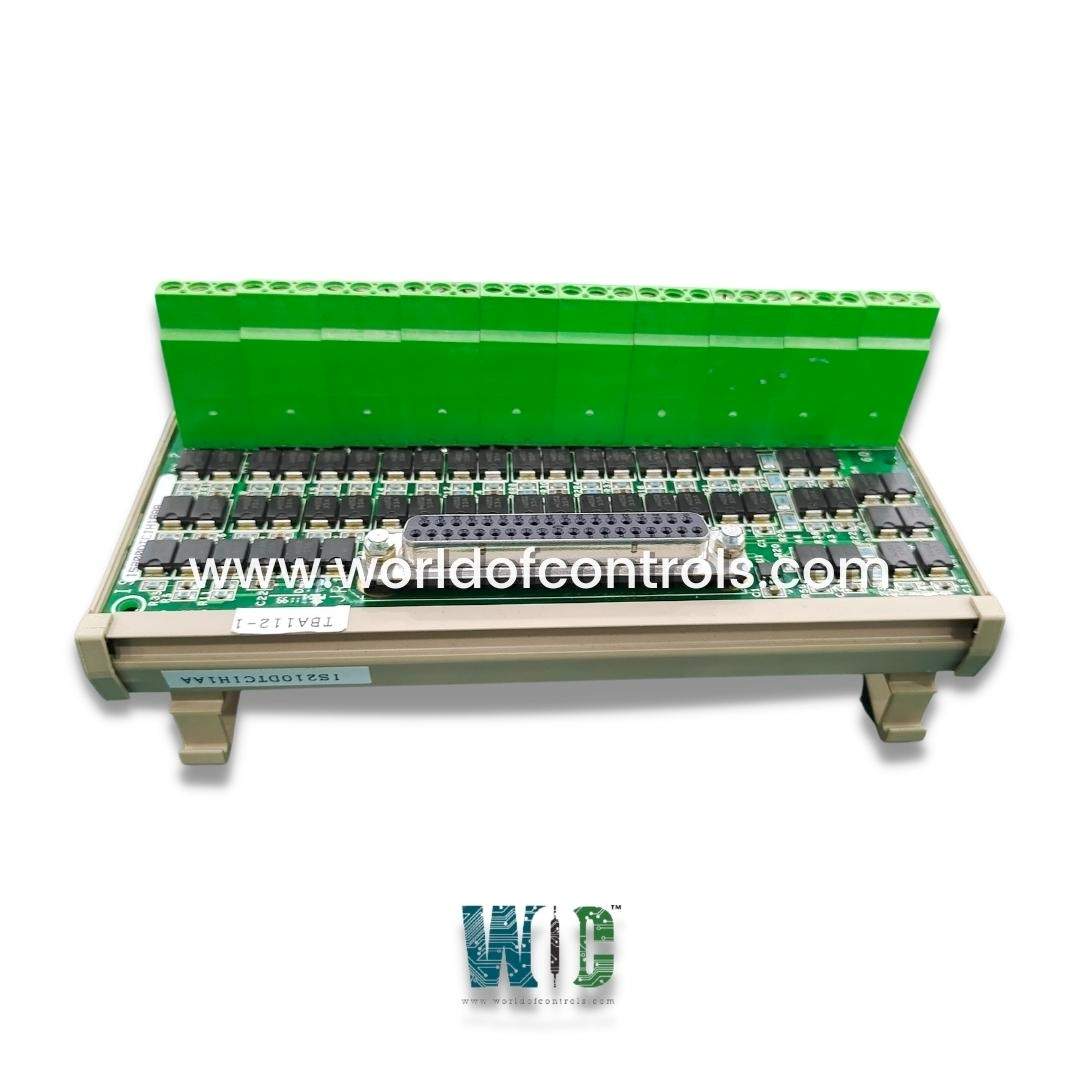
World Of Controls understands the criticality of your requirement and works towards reducing the lead time as much as possible.
IS210DTCIH1A - Simplex Contact Input with Group Isolation Terminal Board is available in stock which ships the same day.
IS210DTCIH1A - Simplex Contact Input with Group Isolation Terminal Board comes in UNUSED as well as REBUILT condition.
To avail our best deals for IS210DTCIH1A - Simplex Contact Input with Group Isolation Terminal Board, contact us and we will get back to you within 24 hours.
SPECIFICATIONS:
Part No: IS210DTCIH1A
Manufacturer: General Electric
Function: Simplex Contact Input with Group Isolation Terminal Board
Series: Mark VI
Operating temperature: 0 to 60oC
Power Supply Voltage: 28 V dc
Board Size: 8.6 cm wide x 16.2 cm
Number of channels: 24
Excitation voltage: 24 V dc
Input Current: 2.5 mA
Availability: In Stock
Country of Origin: USA
Manual: GEH-6421M
FUNCTIONAL DESCRIPTION:
IS210DTCIH1A is a Simplex Contact Input with a Group Isolation Terminal Board manufactured and designed by General Electric as part of the Mark VI Series used in the GE Speedtronic Control System. A small terminal board made for DIN-rail mounting is the Simplex Contact Input with Group Isolation (DTCI) terminal board. The DTCI board connects to the VCCC (or VCRC) processor board via a single cable and contains 24 contact inputs with a nominal excitation of 24 V dc. For a total of 48 contact inputs, two DTCI boards can be coupled to the VCCC or VCRC. On a DIN rail, the terminal boards can be stacked vertically to save cabinet space. This board is only offered in a simplex configuration.
The DTCI board should be slid into the plastic holder after mounting it to the DIN rail. The terminal block should be directly connected to the wires for the contact inputs. The Euro-Block style terminal block has 60 terminals and is fixedly mounted to the terminal board. The most common wire size is #18 AWG. The SCOM (ground) connection, which should be as close to the center as feasible, is secured with two screws, 55 and 56. For the 24 V dc excitation power, six screws are offered.
OPERATION:
The only difference between DTCI and TBCI is that DTCI is scaled for 24 V dc while TBCI does not have the same functionality or onboard signal conditioning. The input excitation spans from 18 to 32 V dc, and the threshold voltage is equal to 50% of the excitation voltage. 12 V rms is the AC voltage rejection. On the first 21 circuits, contact inputs require a nominal current of 2.5 mA, and on circuits 22 through 24, this current is 10 mA. Near the point of signal entrance, filters decrease high-frequency noise and control surge on each input. The discrete input voltage signals are cabled to the VCCC board (or VCRC), which passes them through optical isolators and sends the signals across the VME backplane to the VCMI. The controller receives them from the VCMI after that.
WOC has the largest stock of GE Speedtronic Control System Replacement Parts. We can also repair your faulty boards and supply unused and rebuilt boards backed up with a warranty. Our team of experts is available round the clock to support your OEM needs. Our team of experts at WOC is happy to assist you with any of your automation requirements. For pricing and availability on any parts and repairs, kindly get in touch with our team by phone or email.
What is a Simplex Contact Input with a Group Isolation Terminal Board?
A Simplex Contact Input with a Group Isolation Terminal Board is a device used in electrical systems to manage and isolate contact inputs in groups for simplified monitoring and control.
Can the terminal board be integrated with other control or monitoring systems?
Many terminal boards are designed for seamless integration with other control or monitoring systems, such as PLCs (Programmable Logic Controllers), SCADA (Supervisory Control and Data Acquisition) systems, or building automation systems. This integration allows for centralized monitoring and control of contact inputs alongside other system components.
Does the terminal board support remote monitoring and control?
Some terminal boards may support remote monitoring and control capabilities through network connectivity options such as Ethernet or serial communication protocols. This enables users to access and manage contact inputs remotely, providing greater flexibility and accessibility in monitoring and controlling the system.